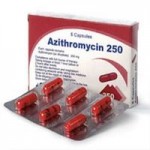[dropcap]B[/dropcap]eing addicted to doctor recommended drugs is a serious concern many Americans confront. The renowned victims are celebs who undergo hospitalization or death from an overdose of pain medications. Many Americans are vulnerable to prescribed pills dependence, with nearly twenty percent of the population requiring prescribed medicines. Typically these prescribed pills are opioids, a type of drugs. Older adults are suffer the largest danger for addiction since they take all sorts of medication at their age. According to the Drug Enforcement Administration, more accidents stem from prescribed opioids than heroin and cocaine. Opioids’ unsafe consequences consist of queasiness, sedation, unconsciousness, respiratory depression and arrest, and sleepiness. The Administration’s March 2009 document adds that state approved treatment establishments are handling an increased number of painkiller addiction patients.
Despite the occurrence of dependence, opioids fulfill an important responsibility in curing pain. The American Pain Foundation reports that over seventy-six million US citizens suffer from pains over twenty-four. Around 42 percent of that group must endure the pain for more than a year. Their sole solution from these pains is prescription drugs such as hydrocodone, mepridine, and oxycodone. The occurrence of dependence should not impede the benefits of these pills. There are precautions one can take to avoid prescribed drug dependence.
The foremost precaution is to not suddenly change another doctor while under the opioid pill. Having one doctor saves you the hassle of keeping up with your past of pain pills. The diagnosis on your consumption and potential indicators of abuse will be coherent. You can also refer to a pain specialist, who will scrutinize your painkiller intake and analyze urine drug exams to prevent addiction. A signed treatment agreement is at times required for doctors to take act on a solution once they see addiction. Such solution may involve discussing matters with the person’s relatives.
In response to the issue, the United States Food and Drug Administration (FDA) and drug companies are changing the medicine’s composition to avoid their over use. A latest advancement is the OxyContin’s new composition, which reduces the medication quantity once the tablets are chewed or crushed. Grinding or crushing of medicines is a typical method of abusing these classes of medicines.
The government is also initiating action, with 40 states hoping to submit laws for the establishment of prescribed drug monitoring plans. These programs will supervise the schedule area, and consumers of prescribed medicines.
Medicine users also have to do their responsibility in curbing addiction. People who still feel pain in spite of taking medicine should visit their physician. A prescription note is always required when it comes to painkillers. Pain medications are risky when unprescribed but still taken. Do not rely on the referral from someone you know. The doctor would recommend another painkiller brand or dosage schedule to lessen the pain you are undergoing. People also need to note the various states their body is experiencing as they take the prescribed pain medicines. A tolerance to your drugs will take a while, so don’t be too upset about automatically seeing results.
There are also addiction-free alternatives to painkillers. Injections of steroids or other types of drugs can stop the nerve that hinders pain signals. Other doctors recommend physical treatment or even behavioral therapy, calming solutions, or biofeedback. Acupuncture is another potential painkiller, which uses the body’s personal pain killers by intensifying your endorphins’ degree. These are usually practical methods and have lesser biological consequences.
Workouts should also be integrated into the pain victim’s activities. Doing a habitual workout regimen stops muscle degeneration. The Annals of Internal medicine’s 2005 study says that a monitored workout plan (planned according to your situation) will avoid pain and promises improved bodily functions. Your physician can recommend a physical specialist or try looking for professional personal body trainers.





